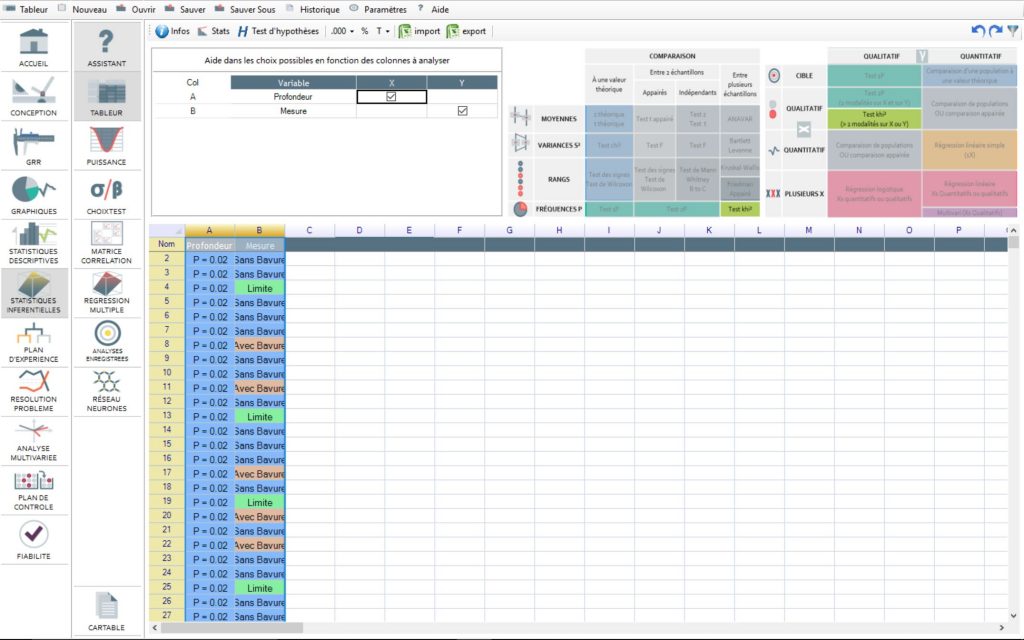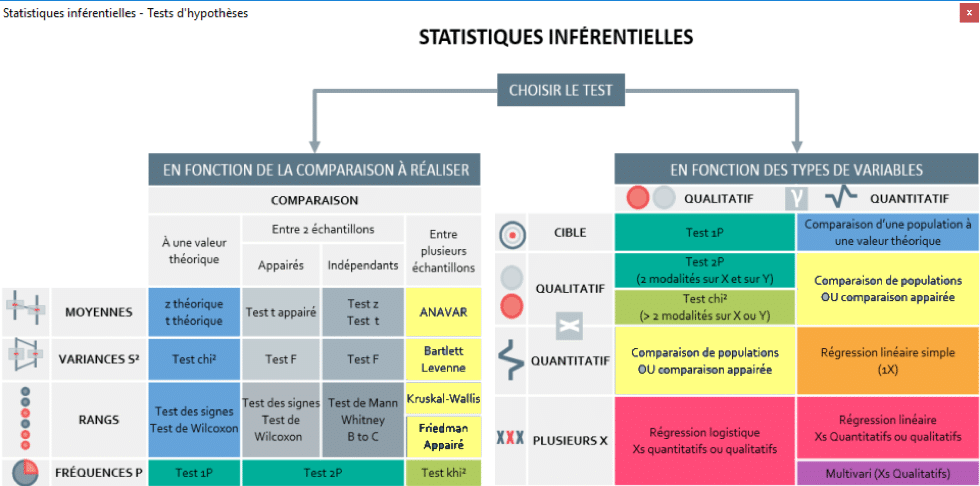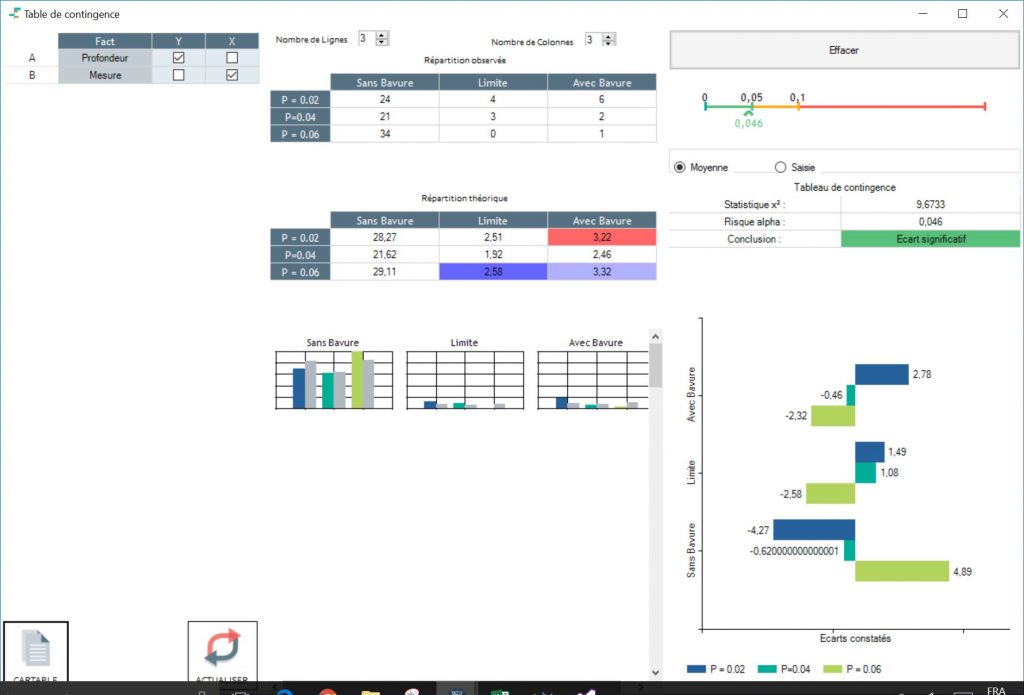User Guide
Example 4: Frequency comparison between several samples
You want to solve a burring problem on a machining apparatus. You suspect that the passing depth is the source of these burs. You therefore plan to carry out 3 tests on about 30 parts while varying the passing depth. For the test, you measured the presence of burs for each part. Here are the results of your tests:
| P = 0,02 | P = 0,04 | P = 0,06 | |
|---|---|---|---|
| Without burs | 25 | 22 | 35 |
| With burs | 6 | 2 | 1 |
| Borderline | 4 | 3 | 0 |
According to the results of these tests, is there a machining configuration that will significantly reduce burring?
Which test do you choose?
Enter the data in Ellistat. Then select the inferential statistics menu (on the left). In the adapted test selection menu (table at the top) select your Y (that which you will measure on each part, Measure), then select your X (Depth).

The inappropriate tests are greyed out and the only choice left to you is the chi2 test.
Explanation:
Left hand table - Depending on the comparison to be carried out: We want to compare the appearance frequency of parts without burs between three samples, therefore the test being used is chi2.
Right hand table - Depending on the types of variables: Y is the result of the measurement Without bur/With bur/limit (qualitative) depending on (X) the passing depth with only 3 modes (qualitative). The test that is therefore used is the chi2

Result:
Once the data is entered in the chi2 test we get:

The difference is significant, this means that there is at least one mode that is different than the others. Referring to the theoretical distribution table we see that the theoretical distributions of pass depth, P=0.06 and P=0.02, are coloured. These are the main contrasts. Effectively, for the depth P=0.06, we observed no limit parts. Therefore, the theoretical distribution, in the main thing, gives custom 2.5 limit shares.
Consequently, we can deduce that the depth P=0.06 produces significantly less "Borderline" and "With bur" parts than the other pass depths. This configuration is thus preferred.